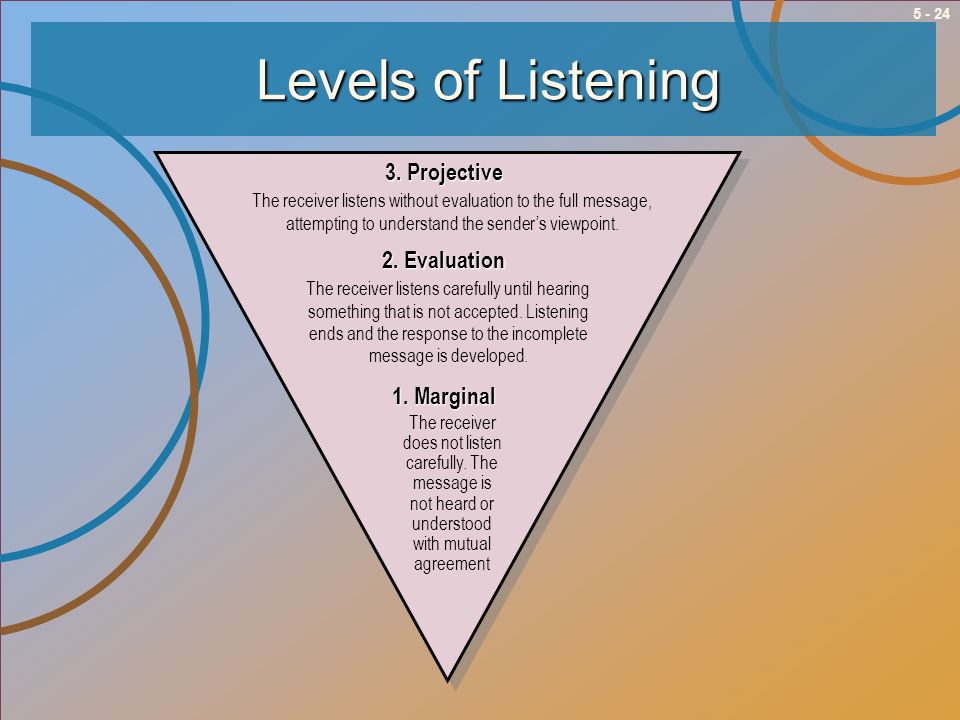Whenever people listen, they are at one of three basic levels of listening. These levels require various degrees of concentration by the listener. As you move from the first to the third level, the potential for understanding and clear communication increases.
Marginal Listening
The first and lowest level, involves the least concentration, and typically, listeners are easily distracted by their thoughts. During periods of marginal listening, a listener shows blank stares, nervous mannerisms, and gestures that annoy the prospect and cause communication barriers. The salesperson hears the message, but it does not sink in. There is enormous room for misunderstanding when a salesperson is not concentrating on what is said. Moreover, the prospect cannot help but feel the lack of attention, which may be insulting and reduces trust. It may be funny when family members continually patronise each other with, ‘Yes, dear’ regardless of what is said. In real life, however, it is not funny.
Salespeople of all experience levels are guilty of marginal listening. Beginners who lack confidence and experience may concentrate so intensely on what they are supposed to say next that they stop listening. Old pros, by contrast, have heard it all before. They have their presentations memorised and want the prospect to hurry and finish talking so the important business can continue. These traditional salespeople forget that the truly important information lies in what the prospect says.
Evaluating Listening
The second level of listening and requires more concentration and attention to the speaker’s words. At this level, the listener actively tries to hear what the prospect says but is not trying to understand the intent. Instead of accepting and trying to understand a prospect’s message, the evaluative listener categorises the statement and concentrates on preparing a response.
The evaluative listening phenomenon is a result of the tremendous speed at which a human can listen and think. It is no surprise that evaluative listening is the level of listening used most of the time. Unfortunately, it is a difficult habit to break, but it can be done with practice.
In evaluative listening, it is easy to be distracted by emotion-laden words. At that point, you are not listening to the prospect. Instead, you are obsessed with the offensive word and wondering what to do about it. This is a waste of time for both you and the prospect. It increases personal and relationship tension and throws your communication off course. To avoid the problems of marginal and evaluative listening, practice active listening.
Active Listening
This is the third and most effective level of listening. The active listener refrains from evaluating the message and tries to see the other person’s point of view. Attention is not only on the words spoken but also on the thoughts, feelings and meaning it conveys. Listening in this way means the listener puts herself into someone else’s shoes. It requires the listener to give the other person verbal and nonverbal feedback.
Active listening is a skill that takes practice in the beginning, but after a while, it becomes second nature. The logic behind active listening is based on courtesy and concentration.
Active listening is sometimes difficult to do, especially for the novice salesperson. The novice may continue to talk about a situation or problem. However, the salesperson must learn to listen. It is a key to sales success.
